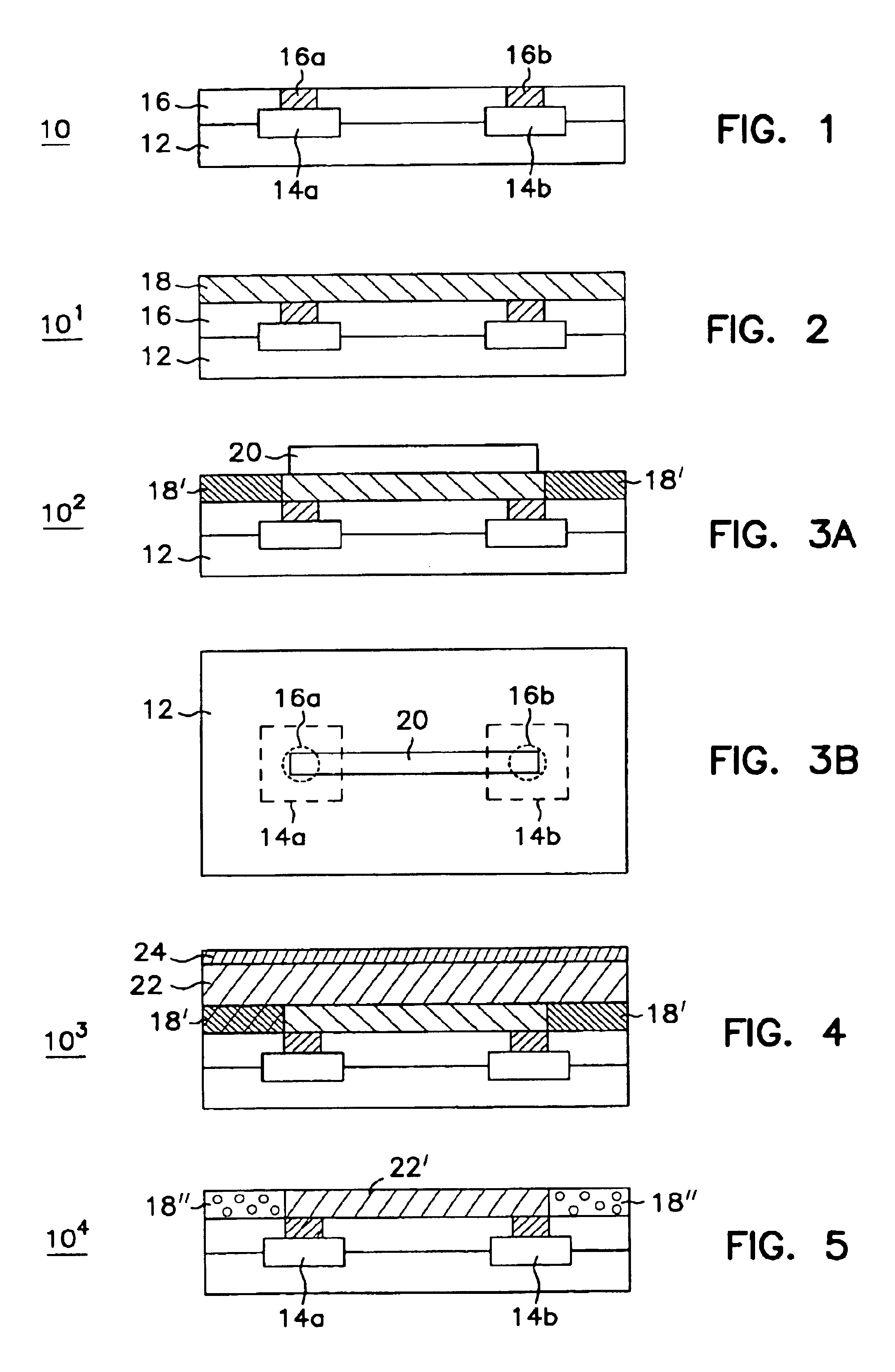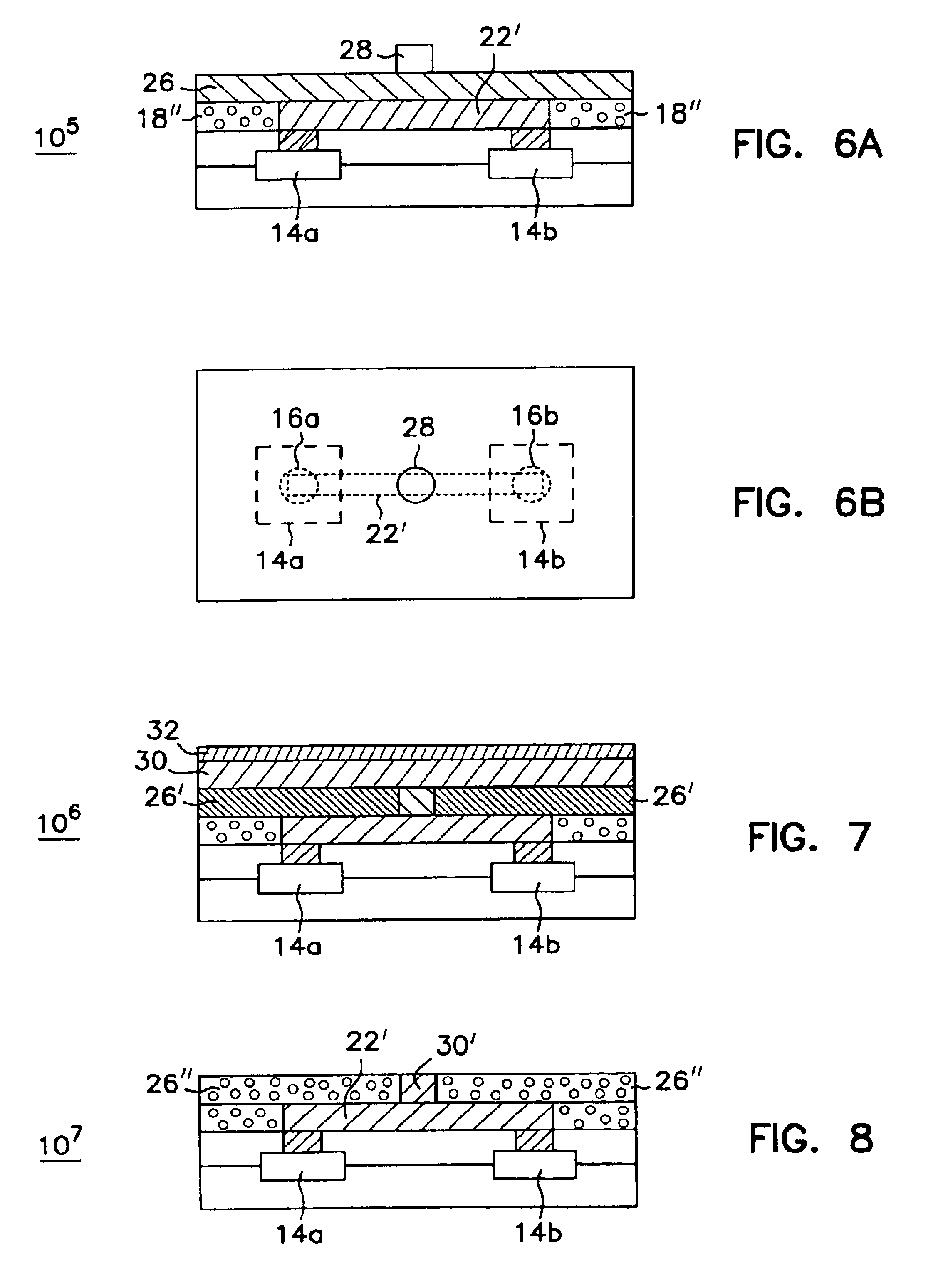Methods and structures for metal interconnections in integrated circuits
a technology of integrated circuits and metal interconnections, which is applied in the direction of semiconductor devices, electrical equipment, semiconductor/solid-state device details, etc., can solve the problems of increasing the cost of manufacturing integrated circuits, wasting power, and wasting power, so as to achieve faster, more-efficient integrated circuits, and eliminate trench digging steps
- Summary
- Abstract
- Description
- Claims
- Application Information
AI Technical Summary
Benefits of technology
Problems solved by technology
Method used
Image
Examples
Embodiment Construction
The following detailed description, which references and incorporates FIGS. 1-10, describes and illustrates specific embodiments of the invention. These embodiments, offered not to limit but only to exemplify and teach the invention, are shown and described in sufficient detail to enable those skilled in the art to practice the invention. Thus, where appropriate to avoid obscuring the invention, the description may omit certain information known to those of skill in the art.
The detailed description includes two sets of separate but overlapping embodiments of the invention. The first set of embodiments, illustrated principally with FIGS. 1-8, pertains to a preferred method of making single- and multi-level interconnective structures. The second set of embodiments, illustrated principally with FIGS. 9 and 10, concern hybrid interconnect structures which combine air bridges with structures exemplified in the first set of embodiments.
Preferred Method of Making Single- and Multi-Level In...
PUM
 Login to View More
Login to View More Abstract
Description
Claims
Application Information
 Login to View More
Login to View More - R&D
- Intellectual Property
- Life Sciences
- Materials
- Tech Scout
- Unparalleled Data Quality
- Higher Quality Content
- 60% Fewer Hallucinations
Browse by: Latest US Patents, China's latest patents, Technical Efficacy Thesaurus, Application Domain, Technology Topic, Popular Technical Reports.
© 2025 PatSnap. All rights reserved.Legal|Privacy policy|Modern Slavery Act Transparency Statement|Sitemap|About US| Contact US: help@patsnap.com



